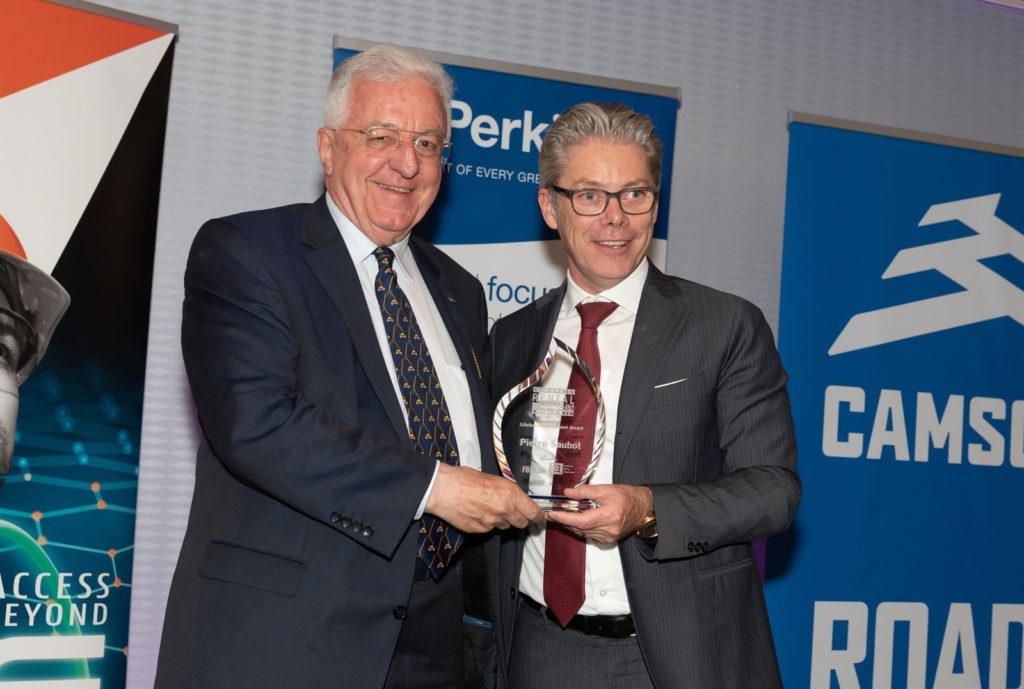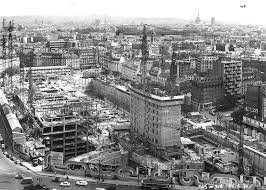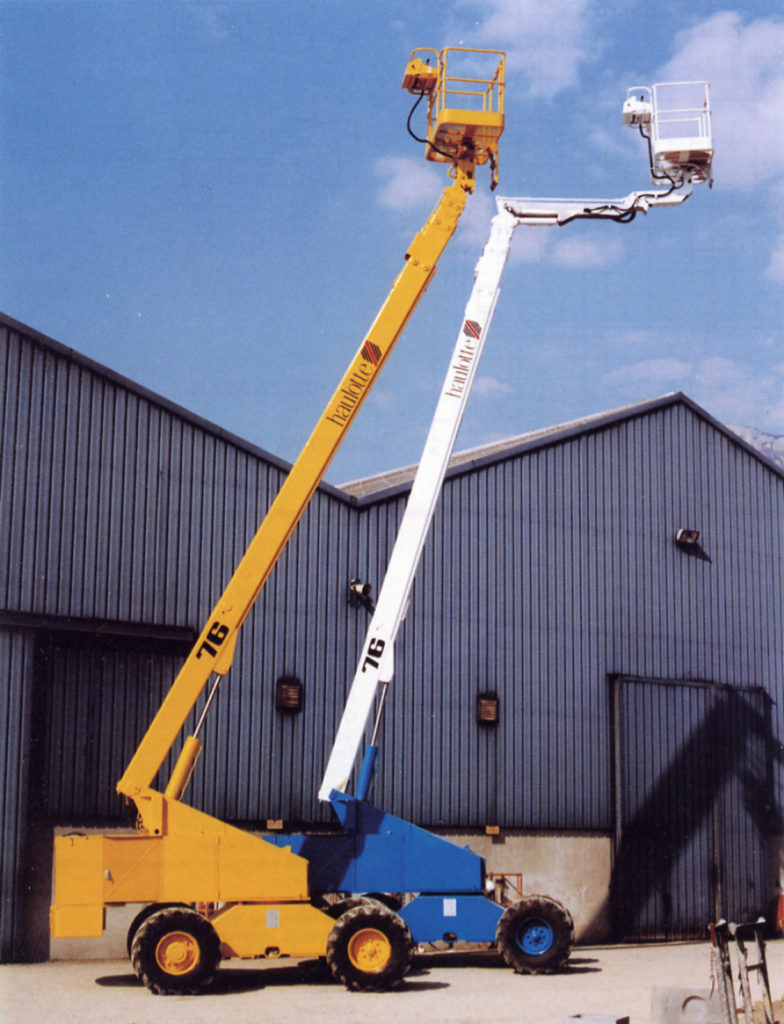On 15 May 2019, Pierre Saubot, President and founder of the Haulotte Group, received the Lifetime Achievement Award at the European Rental Awards in Madrid, Spain. This special award is the culmination of his career as an entrepreneur at the head of the Haulotte Group. This was the opportunity to look back with him on his journey and major dates that marked the creation and the development of the group.

Pierre Saubot, you are the president and founder of one of the world's leading manufacturers of lifting equipment. How did this great adventure begin?
The Haulotte Group’s adventure began in 1985. I was then 41 years old, but this passion for the industrial sector, entrepreneurship, construction and 3D work goes back to when I was still a student. I come from a family of architects and I remember this very special day, certainly at the origin of all my professional passions.
When I was about 16 or 17 years old, I found myself one Saturday afternoon with my father and his partner at their architectural office. They began to sketch in front of me, with charcoal on blank tracing paper, on a drawing board, the plans of a tower that, a few years later, would become the Montparnasse tower (which, with its 209 meters, is still the highest skyscraper in Paris). Everything was there, the desire to undertake, the passion to invent, to create, to defy the constraints of gravity and to work upwards in 3 dimensions.

This work in 3 dimensions, did it correspond, from the beginning, to something particular for you?
Yes, absolutely. However, at the beginning of my career, it was a bit by chance that I discovered the world of lifting equipment. After completing the Supelec Engeneering Program (engineering degree), followed by an MBA, I started my professional career in 1968 with the company Bergerat Monnoyeur, then Caterpillar’s distributor in France. On the day I arrived there was a vacancy in the new lifting division that I immediately filled, and I discovered the joy of working in a 3D world, which then led me to create the company’s « P&H » crane sales department in the 1970s.
In 1985 when you acquired the two companies Pinguely and Haulotte, you developed the emerging market of aerial work platforms and of people-lifting platforms.
What convinced you to invest in this new sector ?
In 1985, I was not yet an entrepreneur but my desire to be one was very strong. I wanted to launch and develop my own company. I had the desire to invest in the industrial sector, and more precisely, in the lifting equipment sector that I discovered during my first years at Bergerat Monnoyeur. At that time, Pinguely and Haulotte were our two main competitors and I kept a close eye on their activities.
So, I knew these two companies very well. As early as 1984, when the Creusot-Loire group was seeking legal redress, I applied to recover the two companies Pinguely and Haulotte. My offer was not accepted at that time. When I learned about the bankruptcy of the group a year later from the press, I immediately submitted a recovery offer to the Ministry of Industry. I was the only candidate at the time, and I remember that during my first interview, the Ministerial Delegate in charge of the file replied to me: « I didn’t know that UFOs existed ». At that time, the aerial work platform market did not exist. Both entities produced only cranes, which were rather rudimentary. The construction and public works markets were in crisis, the industrial sector was in crisis, and there was no reason to expect a rapid recovery.
That’s how in June 1985 I became the owner of two factories – Haulotte in Chambéry and Pinguely in Saint-Etienne – with everything to be revived. Nevertheless, it was an achievement due to my persistence. I would have never bought any companies other than these. Nor would I have invested in any other sectors of activity other than this one. That was exactly what I wanted, and I was strongly determined.

How did you "feel" that aerial work platforms were the right path for development?
When the two companies, both of which produced cranes, were taken over, there was Haulotte, who operated thanks to contracts with the French Army; and Pinguely, whose production was at a complete standstill. The Creusot-Loire group had stopped investing in R&D 5 years before. We have maintained the crane manufacturing activity, but at the same time, we reinvested in innovation in order to diversify our product offer.
We then had the choice between the development of telescopic forklifts (a market that already existed in France and Europe where there was already competition) or self-propelled aerial work platforms (an entirely new product that had just been launched on the US market).
"I then decided, alone, to invest in the development of aerial work platforms, a gambling decision at the time.
A new market to develop meant either bankruptcy or leadership, with no real competition in Germany and Japan, two countries with an established reputation in these fields."Pierre Saubot Tweet

How did you organize the development of the aerial work platform market?
It was as of 1993 that the group really took off. Obtaining major contracts with the French Army for military cranes at very competitive but well-funded prices, enabled us, on the one hand, to stop the production of civil cranes (a sector in which we were too far behind in technology) and, on the other hand, to provide sufficient financial resources for the group to develop the new aerial work platform sector. We have focused all our efforts, both human and financial, on this. We have put ourselves on the line for innovation, research and development, based on the new European regulations that increasingly imposed safety standards for working at height.
In 1995, we merged both companies into a single entity – Haulotte – with a clear positioning and a clear desire to become THE specialist and leader in the aerial work platform in Europe. Our bet finally paid off and the activity grew so fast in the second half of the 1990s that production went from a few hundred machines per year to several thousand.
Do you want to read the rest of Pierre Saubot’s interview?